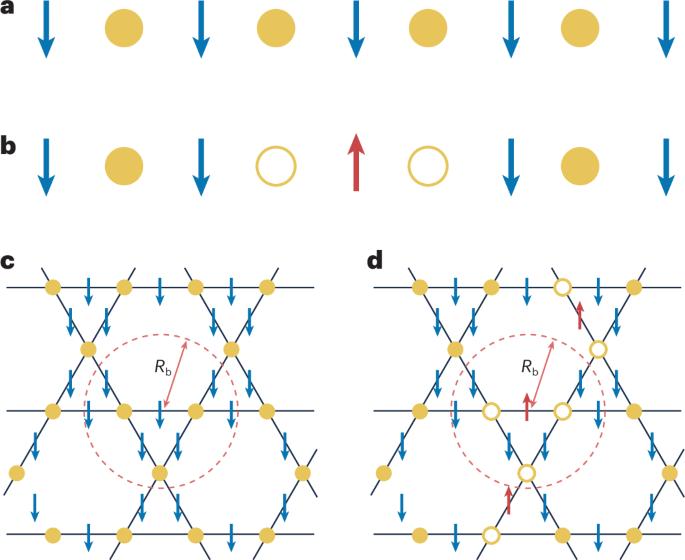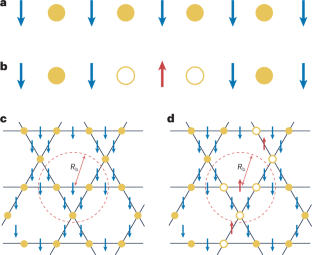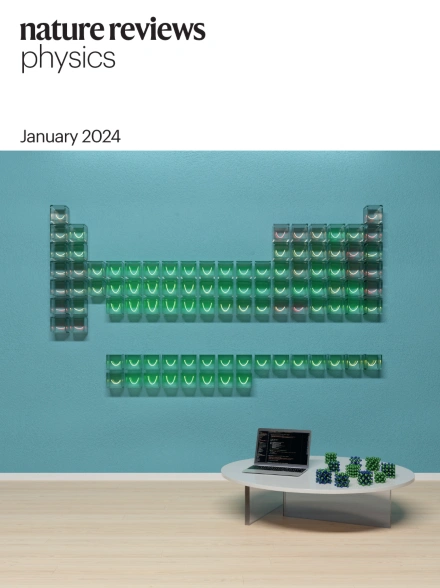雷德贝格原子阵列中的新兴 U(1) 格规理论
IF 39.5
1区 物理与天体物理
Q1 PHYSICS, APPLIED
引用次数: 0
摘要
雷德贝格原子阵列作为一种新型平台出现,展示了丰富的量子多体物理学,为通用量子计算带来了希望。雷德贝格封锁效应在该系统中建立多体相关性方面发挥着至关重要的作用。在过去的两三年里,Rydberg 阵列已被用于实现奇异的基态,如自旋液体、违反量子热化的量子多体痕态,以及通过量子动力学实现的约束-解约束转变。在本《视角》中,我们使用晶格规理论作为通用理论框架来描述雷德贝格封锁效应,以及该系统从平衡相到量子动力学的最新激动人心的发展。通过这一理论框架分析雷德贝格原子阵列,可以揭示其与其他强相关系统(如费米-哈伯德模型和格规模型)的联系,从而启发人们发现这一平台中的新现象。雷德堡原子阵列是一个新兴的量子多体物理平台,展示了丰富的物理现象,如量子自旋液体和量子痕态。本视角通过统一的理论框架--格规理论--分析了这一系统的最新进展,为量子模拟提供了新的见解。本文章由计算机程序翻译,如有差异,请以英文原文为准。


Emergent U(1) lattice gauge theory in Rydberg atom arrays
Rydberg atom arrays have emerged as a novel platform exhibiting rich quantum many-body physics and offering promise for universal quantum computation. The Rydberg blockade effect plays an essential role in establishing many-body correlations in this system. Over the past 2 or 3 years, Rydberg arrays have been used to realize exotic ground states such as spin liquids, quantum many-body scar states violating quantum thermalization, and a confinement–deconfinement transition through quantum dynamics. In this Perspective, we use lattice gauge theory as a universal theoretical framework to describe the Rydberg blockade effect and the recent exciting developments in this system from equilibrium phases to quantum dynamics. Analysing Rydberg atom arrays through this theoretical framework can reveal their connection with other strongly correlated systems, such as the Fermi–Hubbard model and the lattice gauge model, which can inspire the discovery of new phenomena in this platform. The Rydberg atomic array is an emerging quantum many-body physics platform, exhibiting rich physical phenomena, such as quantum spin liquids and quantum scar states. This Perspective analyses the latest progress in this system through a unified theoretical framework — lattice gauge theory — providing new insights for quantum simulation.
求助全文
通过发布文献求助,成功后即可免费获取论文全文。
去求助
来源期刊

Nature Reviews Physics
Multiple-
CiteScore
47.80
自引率
0.50%
发文量
122
期刊介绍:
Nature Reviews Physics is an online-only reviews journal, part of the Nature Reviews portfolio of journals. It publishes high-quality technical reference, review, and commentary articles in all areas of fundamental and applied physics. The journal offers a range of content types, including Reviews, Perspectives, Roadmaps, Technical Reviews, Expert Recommendations, Comments, Editorials, Research Highlights, Features, and News & Views, which cover significant advances in the field and topical issues. Nature Reviews Physics is published monthly from January 2019 and does not have external, academic editors. Instead, all editorial decisions are made by a dedicated team of full-time professional editors.
 求助内容:
求助内容: 应助结果提醒方式:
应助结果提醒方式:


